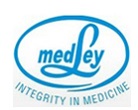The government plans to amend the Drugs and Cosmetics Rules to ensure availability of drugs at reasonable prices and use of generic medicines, finance minister Arun Jaitley announced in the Union budget for 2017-18.
Finance Minister Arun Jaitley today said that the government has prepared an action plan for poor health. The government has also targeted the elimination of tuberculosis by 2025. The budget proposal said that the 1.5 lakh health sub-centres will be transformed into health and wellness centres.
This year, there is also a push for amending drug rules and ensuring that drugs are available at reasonable prices. One of the biggest highlights for the healthcare space is the focus on new rules regarding medical devices, aimed at attracting investment in the sector and ensuring the reduced cost of devices. The Finance Minister said that new rules for pricing medical devices should benefit the common man.
“The Medical Council had recently amended its guidelines to encourage doctors to prescribe generic names of medicines. In the budget speech, it has been indicated that changes may also be introduced to the Drugs and Cosmetics Rules along similar lines. This will be a significant change if introduced and pharma companies will have to alter their marketing strategies,” said Bhavik Narsana, partner at law firm, Khaitan & Co.
In last year’s budget, the government focused on a new health protection scheme and making quality medicines available at affordable prices. The Health Protection Scheme offered a cover of Rs 1 lakh for unforeseen illnesses in poor families, with an additional Rs 30,000 for senior citizens. The government had also planned to add over 3,000 pharmas under the Jan Aushadhi Yojana, to provide generic drugs at affordable rates.
Over the past years, there has been a demand to increase the focus on infrastructure and making healthcare affordable to the population. There was also a push towards an increased focus on medical delivery accessibility in rural areas.
Overall, the government has introduced measures to make drugs and devices affordable, but there needs to be a stronger focus on setting up an infrastructure fund and creating an environment to ensure that startups can focus on domestic production of equipment, devices and wearables. Aid towards research and development in the space is also a must.
Targets
“Poverty is usually associated with poor health . It is the poor who suffer the maximum from various chronic diseases.“
Keeping the above framework in mind, the minister was then seen highlighting targets of elimination for many diseases over the coming few years
The government has also prepared an action plan to eliminate kala-azar and filariasis diseases by 2017-18, leprosy by 2018, and measles by 2020. Elimination of tuberculosis by 2025 has also been targeted.
Elimination of Leprosy – 2017
Elimination of Measels -2020
Elimination of TB by 2025 has also been targeted
Besides this major targets for reduction of IMR and MMR were highlighted as
IMR from 39/1000 in 2014 to 28/1000 in 2019
MMR- 167 in 2011-13 to 100 in 2018-20
AIIMS
Two new AIIMS have been proposed in this years budget. These are going to come up in the states of Jharkhand and Gujrat.
Budget Reaction
“Overall a safe and balanced budget, which could have been bolder,” said Kiran Mazumdar-Shaw, chairperson and managing director of Biocon. “Some incentives for MSMEs but Corporate Tax reduction linked to job creation and investments was missing which would have spurred much needed private sector investment. Removal of FIPB is a good move which will ease FDI inflow. Sadly no impetus for exports, science & technology, manufacturing sector which would have boosted the ‘Make in India’ initiative,” Mazumdar-Shaw added. “We had some expectations from the Union Budget 2017-18, given the government’s past stated intentions of improving access to healthcare.
“While we were hopeful that healthcare would be accorded a national priority sector status, the structural reform in medical education, in particular the increase in the number of post graduate medical seats and DNB courses is praiseworthy as it was long-awaited,” said Prathap Reddy, chairman of Apollo Hospitals .
“The life sciences sector had great expectations from the budget not only from a fiscal incentives perspective but also from a regulatory angle; more so, given the government’s vision of making India one of the top-three pharmaceutical markets by 2020,” said Utkarsh Palnitkar, National Head – Life Sciences practice, at KPMG in India.
“In order to stay competitive in the overseas market and given the uncertain global climate, it was expected that specific impetus or incentives would be given to innovation in the form of weighted deduction on R&D, incentives for patents, exemptions of certain duties and taxes, etc. These demands remained largely unaddressed, giving no specific reason to cheer for the sector as a whole in 2017–18,” Palnitkar said.
Yesterday’s World Economic Forum said that that India’s public spending on healthcare is much lower than the global average,” said Kanchana TK, Director General, Organisation of Pharmaceutical Producers of India (OPPI) – that represent multinational drug makers. “It is unclear whether the allocations will adequately address current healthcare challenges. We also hoped for some reform announcements on the regulatory front in the form of weighted deduction on R&D, incentives for patents, exemptions of certain duties and taxes, etc,” Kanchana said.











